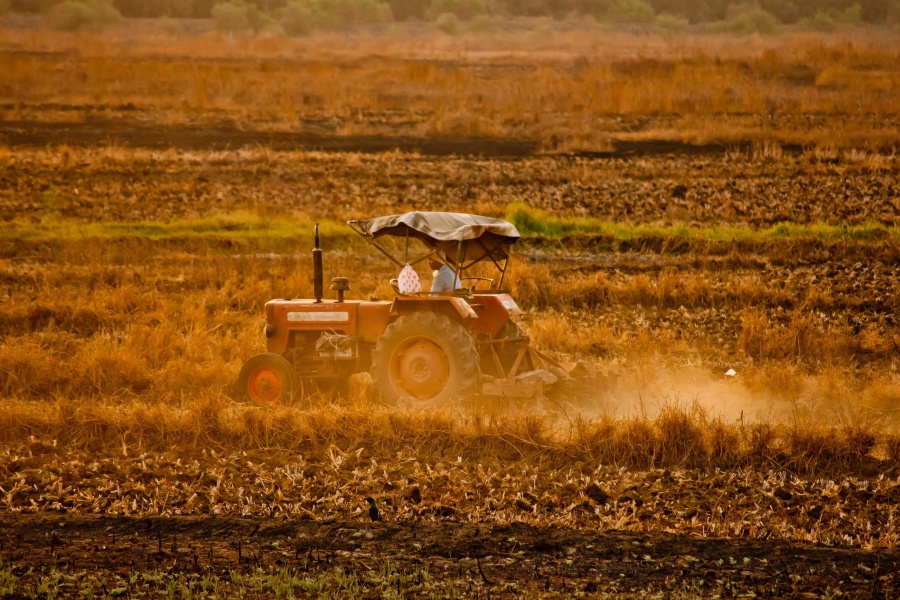Budget 2018 Unveils Rs 14 Trillion Worth of Initiatives To Boost Rural Economy
With the agrarian economy in distress, the government looked to address some key concerns.

In his Union Budget speech on Thursday, Finance Minister Arun Jaitley addressed the government’s plans for the agriculture sector as the very first subject. During the speech, he announced a slew of new projects, besides stronger support for existing schemes amounting to Rs 14.34 lakh crore.
Since the government committed to doubling farmers’ income by 2022, it is looking to “provide maximum livelihood opportunities in rural areas by spending more on livelihood, agricultural and allied activities and construction of rural infrastructure,” as Jaitley said during his Budget speech.
With approximately 86% of India’s farmers either small or marginal, the focus of the government is to improve their access to markets and acquire better remuneration for their produce. Over the past year, vast sections of farmers have expressed their displeasure at the government’s inability to get them remunerative prices and the crash in global commodity prices.
With assembly elections later this year across nine states, and the general election next year, the government has announced that it would set the minimum support price (MSP) at 1.5 times the cost of production for Kharif crops.

The implementation of the proposal giving farmers 50% return over production from the coming Kharif season (also known as the Swaminathan formula), was something that Prime Minister Narendra Modi had promised during the 2014 Lok Sabha campaign.
Another major announcement is the increase in agriculture credit, doling out Rs 11 lakh crore. Access to viable credit is one of the major structural concerns facing farmers at this juncture, and it is indispensable for the production of a good crop.
The target for agricultural credit in 2017-18 has been fixed at a record level of Rs 10 lakh crore. Against the target of agriculture credit disbursal of Rs 10 lakh crore for 2017-18, the outflow till October 2017 was Rs 6.71 lakh crore.
Read also: Budget 2018: ‘World’s Largest Healthcare Programme’ to Cover 10 Crore Families
For the government’s flagship crop insurance scheme—Fasal Bima Yojana—Jaitley increased the budget allocation by more than 40% year-on-year to Rs 13,000 crore from Rs 9,000 crore in 2017-18.
“Keeping in view the risks involved in farming activities, the Government is taking progressive steps through Pradhan Mantri Fasal Bima Yojana and Restructured Weather Based Crop Insurance Scheme to ensure that farmers feel secure against natural calamities,” claims the government.
Of a total allocation of Rs 9000 crore for 2017-18, Rs 8059 crore was utilised.
“For the post-harvest phase, we will take steps to enable farmers to get better prices for their produce in the markets. The coverage of National Agricultural Market (e-NAM) will be expanded from the current 250 markets to 585 APMCs [agriculture produce market committees]. Assistance up to a ceiling of Rs 75 lakh will be provided to every e-NAM market for the establishment of cleaning, grading and packaging facilities. This will lead to value addition of farmers’ produce,” Jaitley said during last year’s Budget.
Addressing Parliament this year, the finance minister claimed that 470 APMCs have been connected to the e-NAM network, while the rest are expected to join the network by March 2018.

Meanwhile, the government has moved little on the proposed enhanced assistance of Rs 75 lakh per market, saying it is “under consideration at present”. This year, Rs 2,000 crore has been set aside for developing agricultural infrastructure in 585 APMCs.
In one of the more positive moves by this government, Jaitley announced the formulation of Operation Green, which essentially offers tax benefits for farmer production companies.
“I propose to allow 100% deduction to these companies registered as farmer producer companies having Rs 100 crore as turnover irrespective of profit,” he said. Although the details on the same aren’t very clear, one must contend that if farmer incomes are exempt from tax, the same courtesy should be extended to farmer-run organisations as well.

Last year, Jaitley had set up a long-term irrigation fund under NABARD for Prime Minister Krishi Sinchayee Yojana (PMKSY) projects worth Rs 40,000 crore. During this Budget, the finance minister announced that the government has sanctioned Rs 14,398 crore for release until December 31. Meanwhile, there has been little progress on the utilisation of the Micro Irrigation Fund with an initial corpus of Rs 5,000 crore under NABARD, which seeks to fulfil the government’s goal of ‘per drop more crop’.
Instead, this year, the Jaitley announced the setting up of “Fisheries and Aquaculture Infrastructure Development Fund (FAIDF) for fisheries sector and an Animal Husbandry Infrastructure Development Fund (AHIDF) for financing infrastructure requirement of animal husbandry sector”.
The total corpus of these two new funds would be Rs10,000 crore.
Read also: Income Tax for the Middle-Class Indian: What Changed in The Budget 2018
In addition, the finance minister allocated Rs 2,600 crore to strengthen irrigation facilities across 96 districts deprived of the same.
One must understand that the Budget is mostly an accounting exercise, answering questions like how the government is spending your tax money. With the agrarian crisis in full swing and elections coming up next year, the government has relayed enough pro-rural signals.
How the government proposes to implement these initiatives on the ground is something that one can’t gauge now. Is this a pro-farmer Budget? We don’t have the answers.
Like this story? Or have something to share? Write to us: [email protected], or connect with us on Facebook and Twitter.
NEW: Click here to get positive news on WhatsApp!
If you found our stories insightful, informative, or even just enjoyable, we invite you to consider making a voluntary payment to support the work we do at The Better India. Your contribution helps us continue producing quality content that educates, inspires, and drives positive change.
Choose one of the payment options below for your contribution-
By paying for the stories you value, you directly contribute to sustaining our efforts focused on making a difference in the world. Together, let's ensure that impactful stories continue to be told and shared, enriching lives and communities alike.
Thank you for your support. Here are some frequently asked questions you might find helpful to know why you are contributing?


This story made me
-
97
-
121
-
89
-
167














